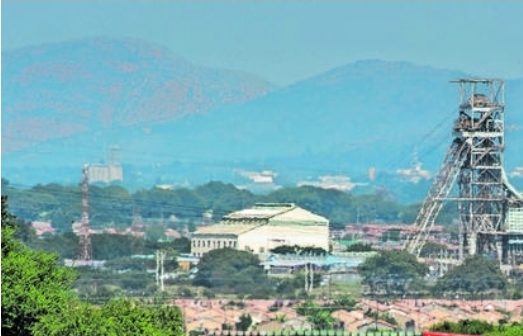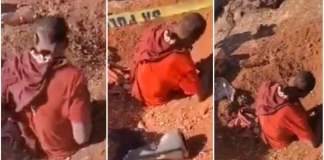Dutch Disease and what to do about it

Late last year, a colleague and I published a peer-reviewed journal article trying to identify whether Southern Africa was afflicted by “premature deindustrialisation”.
Harvard economist Dani Rodrik (in 2016) had identified this pattern of manufacturing decline in developing countries historically sooner than their industrialised counterparts and at lower levels of per capita income.
In other words, developing economies were transitioning into low-value services before having used the manufacturing bandwagon to build a prosperous economy. This is obviously concerning, as manufacturing has been the traditional channel through which to absorb labour and build a sustainable middle class empowered to hold its political and business elites to account.
African countries are increasingly plagued by growing youth unemployment. Given that Africa will be the only fertility-positive continent on the planet by about 2050, we are concerned about future employment prospects for young people.
In our paper last year, we found econometric evidence for premature deindustrialisation in Southern Africa: “There is good reason to believe that the Southern African Development Community group of countries is emerging as a region where deindustrialisation in both employment and output terms is growing more distinct.”
In our regressions — a statistically rigorous way of determining a potential causal relationship between two variables — we found that “a reliance on oil and mineral rents is negatively correlated with industrial employment and manufacturing output”, which suggests Dutch Disease.
Dutch Disease was originally identified in the Netherlands, where growing oil wealth was strangely correlated with manufacturing decline. In Southern Africa, Dutch Disease “could be curbing industrialisation prospects in many oil- and mineral-reliant countries”.
Economists typically posit how the disease works as follows: The sale of a raw commodity increases the demand for that country’s currency, which then appreciates as a result. However, such appreciation renders the country’s manufacturing exports relatively more expensive in global terms, undermining their competitiveness.
It can also generate unearned income for the ruling class. Concomitantly, the extractive industries can draw resources away from the manufacturing sectors (especially during commodity price booms), which further impairs industrial competitiveness.
There have been many wrong-headed attempts to address this phenomenon, often based on poor diagnoses or a naive presumption about the causal mechanisms behind the disease. This is like treating cancer with TB medication. It won’t work.
So, we set out to establish whether, in fact, there was good evidence for Dutch Disease in South Africa. If so, what are its probable causal pathways or patterns and what can, practicably, be done to address them?
In a forthcoming paper, colleagues and I at Good Governance Africa show there is (sadly) actually good statistical evidence to suggest Dutch Disease is afflicting South Africa.
When we interact a South African dummy with mineral rents (to ascertain country-specific effects in our sample of comparable countries), we find a strong negative effect on manufacturing output that is significant at a 90% confidence level.
We also see a negative impact on industrial employment (as a share of overall employment) but no statistical significance there (meaning that the relationship could be explained by other factors).
Critics of models such as the ones we’ve run suggest that it’s impossible to isolate and specify the impact of a country’s mineral rents in such a small sample of countries.
However, this is why we ran the model with data from 1996 onwards and controlled for other factors which the economic literature suggests could also play a role in mediating the relationship.
After controlling for institutional quality — typically the strongest explanatory factor in ascertaining why resource endowments can cause underdevelopment — we found that the effects still held.
What we think is going on here is that South Africa’s mineral rents (despite a paralysed mining industry clearly in crisis) have played a partial role in weakening the country’s institutional quality. This, in turn, has had a negative effect on manufacturing competitiveness through undermining the country’s overall investment attractiveness.
Another possibility is that the electricity crisis, starting in 2008 and climaxing last year (which might still yet peak after the 29 May elections) might be the primary factor explaining manufacturing decline.
However, when we controlled for declining electricity consumption in the sample, the overall efficacy of the model deteriorated, probably because the electricity effect was already being picked up in other factors we had controlled for.
Another option is that globalisation has undermined South African manufacturing attractiveness —labour is cheaper elsewhere and skills and electricity availability are stronger. We haven’t controlled for that in the modelling so, of course, it remains an option.
But all the countries in the sample would have been affected by that, so we still can’t dismiss what we’re seeing — mineral rents seem to be driving down manufacturing output in South Africa, specifically when compared with other countries similarly dependent on mineral rents.
So, what can we do about it? Two things, which are in turn dependent on two prerequisites. First, we need an industrialisation strategy that begins — perhaps ironically — with strengthening the investment attractiveness of the mining industry. We need more money to flow into exploration and production expansion.
Second, we need to ensure a growing mining industry is integrally connected to green industrialisation that will generate broad-based development. This must be the foundation for a much more diversified economy.
However, we must not fall into the trap of thinking downstream beneficiation is our silver bullet — it’s more important to build a set of industries initially connected to mining but that can be sustained long thereafter.
For any of this to happen, we need two other pre-requisites to be in place. First is improved political governance — electoral system reform, alongside parliamentary rule reform, to ensure greater accountability for politicians and government officials.
This goes with robust strengthening of key institutions, such as the Hawks and the National Prosecuting Authority, to prevent corruption.
Second is improved fiscal transparency. South Africa should join the Extractive Industries Transparency Initiative and it must expedite getting off the Financial Action Task Force’s grey list. The longer we stay on that list, the more expensive it is for us to service our debt and the less likely we are to attract investment.
Dutch Disease is a real hindrance to our growth as a country. As with many other obstacles to growth, the answer is better governance and high-quality institutions.
Better governance will not be achieved, however, unless citizens are also empowered to hold governing politicians and officials to account. This starts at the ballot box, but it cannot end there.
Ross Harvey is the head of research and programmes at Good Governance Africa. For election-related material and how to hold governments to account, search online for the Good Governance Africa Election Tracker.





